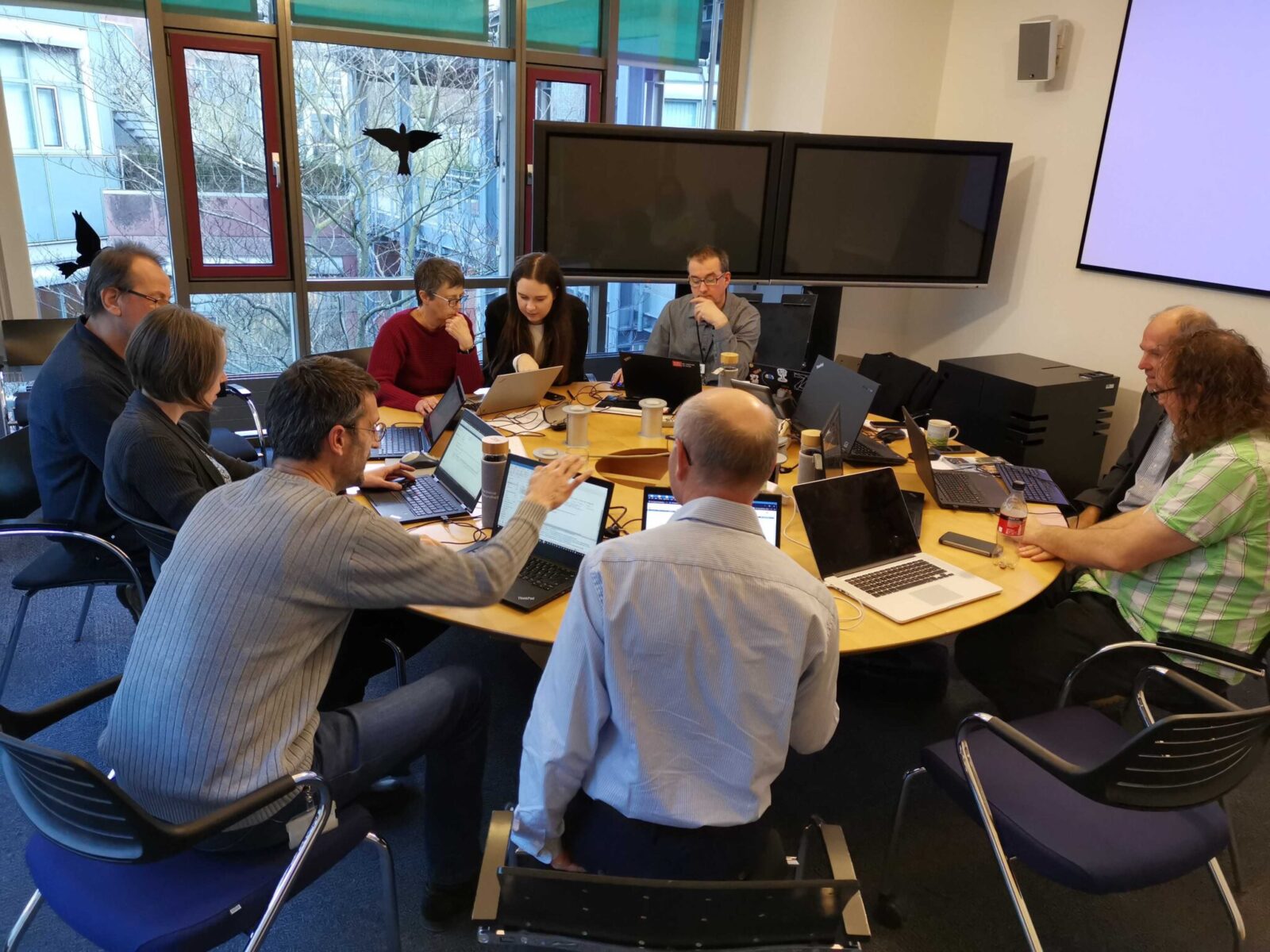DevOps from the Inside Out
In our previous article, we gave you the bird’s eye view of DevOps for mainframe. We talked about some of the unique advantages of DevOps. And we looked at how we make it possible to stop looking at your mainframe like it is a dinosaur. Then, we introduced the idea of how you can improve your mainframe by introducing the agility and flexibility we associate with the cloud, and the future-ready, resource saving solutions we associate with automation.
Today, we are taking an even deeper dive into DevOps from the inside out. Together, we explore how and why DevOps adds agility and flexibility. We talk about the value of continuous delivery for the mainframe, a function that sets DevOps apart from the traditional experience of working with a mainframe. And we look at the ways in which DevOps helps to reduce budget concerns and improve employee experience and productivity.
And, we take a hard look at how to simplify DevOps migration projects. Let’s be honest. We can have all the great ideas in the world, and all the tools that we know will make our lives and our work better. But if we are not able to implement those tools – or migrate to new ways of doing things – we are never going to get anywhere. Once we start dealing with lag and inefficiencies, even if they occur on the road to greater efficiencies and cost savings, we have a problem. That’s why, when we partner with our clients, we keep in mind not only how to connect them to the best solutions to their problems, but how to implement the technology we present in ways that are seamless, and that take into account your needs, your budgets, and your goals.
IBA from the Inside Out

Just as we are looking more closely at DevOps, we want to take a moment to show you a bit more of who we are. IBA Group was established in 1993, when the computing and the technology world was a creative, dynamic space, and engineers like us came in and provided a high level of value and an experience that made (and continues to make) our clients feel heard, feel cared for, and feel like they were connecting with real partners they could trust. That is the kind of thing that people long for even more now. As faceless IT solutions pop up, and it becomes difficult to tell what you are really getting, knowing that you are working with real people, with real experience, who are here to co-create a SMART future with you, goes a long way.
Back in the day, our initial focus was on IBM products, that is part of why we are such experts on mainframes and DevOps. We understand where you are. We have been there for a long time, always with the goal to make things better, stronger, more efficient and more sustainable.
Our expertise in development and support of mainframe applications makes us a leader, with more than 80 teams for more than 100 products.
And, just as we talked about in our last post, inspiring and preparing the next generation to be creative, savvy problem solvers is important to us. It inspires us to educate and employ the next generation of technology leaders. We train and employ at least 25 young people for z Platform every year. We host hackathons and generate new ideas for the development of the mainframe culture. And we love it! Just like we love working to bring DevOps to everyone who needs it.
Agile Problem Solving
DevOps do a lot to improve mainframe app agility. Using DevOps on the mainframe allows you to do what you are already doing with better results, and greater speed, by shortening the lifecycle on mainframe applications.
DevOps facilitates new ways to organize development stages, including pushing mainframe test environments over to distributed test environments. This allows for simulations and other scenarios to run tests. And to run them quickly. This kind of agility enables you to get information faster and to draw accurate conclusions quickly. Ultimately, the level of agility that DevOps provides on the mainframe helps you to identify and resolve issues quickly and accurately.
Continuous Delivery
Continuous delivery of performance information makes it possible to produce continued improvements. This is where we see scalability, responsiveness and customization come to life with mainframe DevOps application.
Because of this continuous delivery of information, response times improve across the board. This means that problems are resolved in near real-time. It also means that fewer problems arise, because they are dealt with rapidly, and effectively. After all, DevOps is about the people involved in our processes, not just the technology itself.
When you receive higher quality information, you get better outcomes. You improve your mainframe. Now, let’s add speed to that equation. When you are able to receive better information faster, you improve your mainframe even more. Suddenly you, in this environment, you end up seeing improvements that are not limited to these processes. You begin to see the positive impact on the people who make up your business. That lends a level of sustainable success to your organization, whose value is unparalleled.
Automation
Improved automation means that you can expect even greater improvements to processes. And, as we have just discussed, it also means better opportunities, experiences, and outcomes for all the people who work with the mainframe and throughout your organization.
Automation simplifies processes across all your organization’s IT. The ability to automate and deploy software projects is a significant value of DevOps, across mainframe applications. When we talk about automation, we are looking at so much more than freeing up time (even though freeing up time is important to all of us). We are talking about making it possible for your teams to be creative, agile, and productive.
Cost and Budget
This is exactly the kind of outcome you need if staffing and budgets are a concern. And, as we all know, these are both always a concern for organizations, to one degree or another. Saving time and resolving issues with agility and flexibility addresses immediate cost constraints that a business may be facing.
The agility that DevOps provides, also allows you to work with even modest budgets, and still get the results that you need. Within a wide range of budgets, with the proper deployment of DevOps, you should be able to expect results that maximize and improve your mainframe and other technology investments.
Inside Out Challenges in Your Business

In addition to budget constraints, many organizations often suffer from overtaxed work teams and other staffing issues. You may have AppDev programmers or system programmer staff shortages. You may be one person doing the work of an entire team!
You may simply have individuals on your team who do not understand, or are not wiling to see and work with the mainframe in a productive way. DevOps helps to bridge the gap between what many people assume the mainframe can do, and what it actually can do now.
Our look inside DevOps shows that this is a smart solution push DevOps transformation as you move applications to the cloud. And moreover, it meets a challenge that is of increasing importance (and no surprise to anyone reading this) about working with legacy mainframes. So many of you are still running legacy mainframe n-3 accounts for critical business systems and production workloads. You are wary of making changes. But you are suffering from overly long lifecycles, and the inability to diagnose, repair and improve your mainframe outcomes for the future.
DevOps is designed to resolve exactly these issues. We are a part of multiple projects that solve these problems that many clients had previously thought were impossible to remedy in a simple, streamlined, sustainable way.
How to Simplify DevOps Migration Projects
DevOps migration projects are complex, for a variety of reasons. Chief among these reasons is the problem, and lag that arises, with MTTD (Mean Time to Detect) issues or problems. A slower rate of time to identify issues necessarily results in a slower time to fix those issues. And so, the complexities increase.
As we all well know, the MTTD is often even longer, and, more to the point, the successful migration to DevOps is even more complicated, when you rely exclusively on in-house staff.
At IBA, we have been leading successful migration projects for our clients for many years. And unlike some others, when we do so, we bring inside-out knowledge of DevOps, mainframe complexities and challenges, along with a deep understanding of what it means to be a real partner to businesses in creating and maintaining reliable, sustainable outcomes for you.
In our next installment of DevOps and the New Mainframe, we take a closer look at the mainframe DevOps lifecycle. We are thinking about all the ways we improve what you are able to do and how you are able to test for success. And we will be sharing some of our favorite client stories to show you the impact DevOps can have on your business.
Looking ahead, we will soon be wrapping our DevOps feature series with a look at just how DevOps helps us at IBA bring to life our mission to Co-create a SMART future. In the meantime, reach out to learn more about how DevOps can help your business. Here’s to our shared Sustainable, Multi-faceted, Automated, Reliable, and Trusted future. The future we build together.